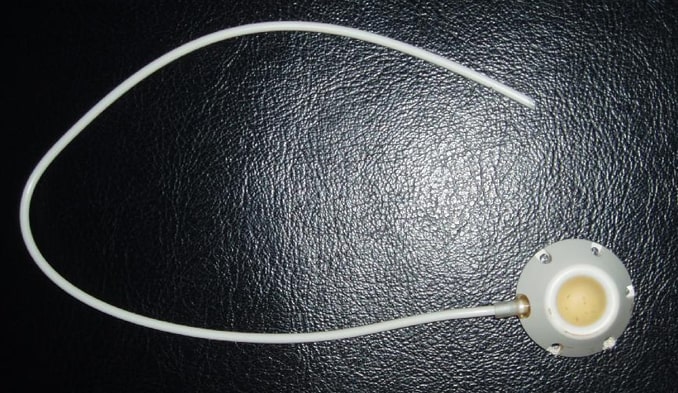What is Port-a-cat?
A port-a-cath, or just port, is a titanium chamber that is connected to a thin hollow silicone tube (catheter). The whole device is placed under the skin of the chest and the catheter is inserted into a large blood vessel leading to the heart. The port-a-cath system provides access to a central venous vessel with just one subcutaneous prick, using a special needle. This type of system is commonly used in cases requiring the infusion of medications over an extended period of time (e.g. chemotherapy for cancer patients, antibiotics, hormone treatment, etc.). Ports are most appropriate for people who require regular, long-term, intravenous treatment. People who have difficulty with other types of IV access such as PICC or small peripheral cannula can also benefit from port placement.
There are many different types of ports. The treating doctor decides which is the best type of port for the individual patient depending on the treatment they are having.
Why use Port-a-cat?
- Allows infusion of all medications and easy blood sampling.
- Reduces the need to insert needles into the veins of the arms, making procedures more comfortable.
- May remain in place for up to 5 years or more.
- Gives patients the freedom to use their hands normally in all their daily activities.
- When not in use, no special gate care is required.
- If the patient has a power port, it can be used to obtain contrast medium when conducting a CT scan.
How is my Port-a-Potty placed?
Port-a-cath can be placed as an outpatient procedure or you may stay in the hospital for a short time. The port-a-coat is placed in an operating room by a vascular surgeon. It is usually done under general anesthesia. You may be sedated to make you feel drowsy and relaxed and have local anaesthetic at the insertion site.
Ports are usually placed on the chest wall. A small incision and "pocket" is made for the gate. The catheter portion is inserted into a vein and passed along the vein. The body of the port is placed in the 'pocket'. The body of the port is sewn to the muscle to hold it in place. Both the pocket and the incision for the catheter are closed with dissolvable sutures.
Is there any risk of putting a Port-a-Cat?
There are risks associated with inserting any type of catheter. The risks associated with the insertion of the inserted Port-a-cath is small.
Complications can include injury to a blood vessel, wound, infection, excessive bruising and a small risk of puncturing the lung.
There is also a small risk that the vein under the collarbone will clot. This can cause some swelling of the arm, but is usually not serious.
Will it hurt?
You will have some discomfort at the incision site after the port is placed. This can usually be managed with oral painkillers such as paracetamol. The discomfort should subside after 2-3 days.
One of the advantages of port placement is that when not in use, it is completely under the skin, with no visible tubing or catheter. This means you can shower and carry out your daily activities without worry.
Access to the gate
To gain access to the port for treatment, a local anesthetic cream can be placed on the port site to numb the area. This cream is rubbed off and the skin on the chest wall above the port is cleaned with an antiseptic solution.
The nurse will wear sterile gloves and access the port using a special needle (called a Huber or coreless needle).
Once the port is accessed, the needle can be left in place for 1 week. All treatment, blood draws, tests can then be done using the port. The needle is fixed in place with a transparent dressing. It is important that this dressing does not get wet.
What to watch for after the Port-a-cat is placed?
Over the next few days you should monitor the area around the gate for any of the following signs:
- Swelling
- Bleeding
- flushing
- fluid leakage
- Pain
When Port-a-cath is used for treatment, the needle is changed once a week.
When the port is not in use it is accessed and flushed once a month to ensure that a blockage does not occur.
If you feel unwell or a problem arises and you are concerned, contact your doctor immediately. Report anything you think is wrong with your catheter.
How to care for the gate?
If necessary, the ports can last over 5 years. These are some of the things you can do to look after your port.
- Only allow people who have been trained to use the port to access or provide treatment through it.
- When accessing the gate, make sure the dressing remains dry.
- If the dressing gets wet, ask for it to be changed.
- Make sure your port is flushed monthly when not in use.
- Do not "play" with the needle or bandage when there is access to the port.
- If the port site becomes red or inflamed, notify a medical professional.








